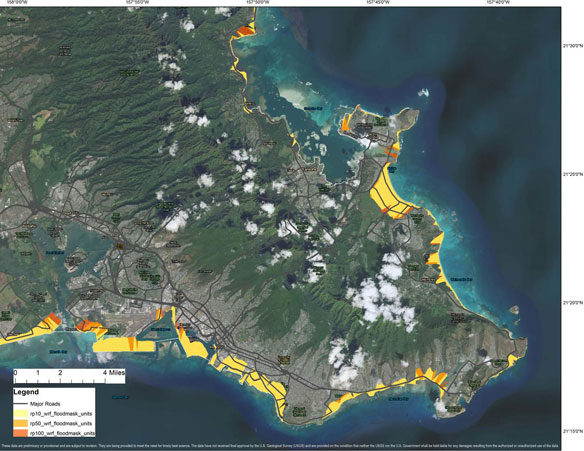
These display 10-year, 50-year, and 100-year flood zones along all sides of the islands and are not explicitly for Hurricane Lane, but does show the relative susceptibility of areas. These are preliminary data subject to revision that have not cleared USGS approval.
Excerpts;
As Hurricane Lane nears Hawaiʻi, the U.S. Geological Survey’s experts on storm-related hazards are taking action, along with other federal agencies, to help minimize potential risks to lives and property.
The USGS deployed 44 instruments off the coast of the Hawaiian island of Molokaʻi as part of an experiment on a coral reef-lined shoreline. There is also a camera system on shore measuring wave-driven run-up and flooding. It is the largest-ever project looking at waves, wave-driven flooding and coastal change.
Using Video Imagery to Study Coastal Change
The experiment is driven by the degradation of coastal habitats, particularly coral reefs, that raises risks by exposing communities to flooding hazards. The protective services of these natural defenses are not assessed in the same rigorous, economic terms as artificial defenses such as seawalls, and therefore they are often not considered in decision-making.
The data collected before, during and after Hurricane Lane will improve the basic understanding of coastal change processes, which in turn will improve future models.
The information can help emergency managers decide which areas to evacuate, which roads to use and where to position heavy equipment for post-storm clean-up…









